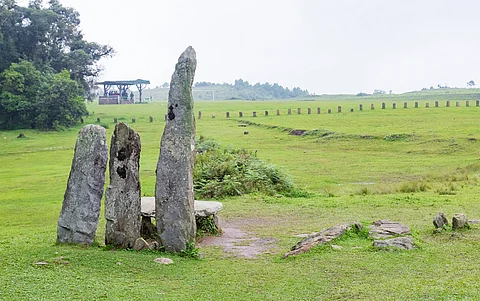

The Supreme Court passed a landmark judgement on the sacred groves of Rajasthan on December 18, 2024, where it directed that the state (and also, India) protect its sacred groves. But what are these?
The worship of nature is as old as humanity itself. In flora, humanity saw perhaps the first manifestation of the divine. There is hardly any religious or cultural tradition on the planet that does not emphasise the presence of divinity among plants: The Yggdrasil of the Norse, the Sidrat al-Muntahâ in Islam or the Bodhi tree of Buddhism, under which the Buddha gained enlightenment.
Kailash C Malhotra, Yogesh Gokhale, Sudipto Chatterjee and Sanjeev Srivastava noted in their 2001 work, Cultural and ecological dimensions of sacred groves in India that a significant tradition among humans has been “to provide protection to patches of forests dedicated to deities and/or ancestral spirits. These patches of forests are known as sacred groves (SGs)”.
They added that while there were different facets to sacred groves, all experts and authors agreed on one central defining feature: The natural or near-natural state of vegetation in the sacred groves, and the preservation of these groves by local communities through social taboos and sanctions that reflect spiritual and ecological ethos of these communities.
These groves are thus segments ‘of landscape, containing vegetation and other forms of life and geographical features that are delimited and protected by human societies under the belief that to keep them in a relatively undisturbed state is expressive of an important relationship of humans with the divine or with nature’.
India and South Asia have a very old tradition of sacred groves, which has continued to the present day. Malhotra, Gokhale, Chatterjee and Srivastava wrote in 2001 that over 50,000 sacred groves have so far been reported from different parts of India.
“Sacred groves are the rich heritage of India and play an important role in the religious and sociocultural life of the local people. SGs are ecosystems by themselves and perform all the ecological functions. Many threatened, endangered and rare species find safe refuge in the SGs. The groves are repositories of biological wealth of the nation,” the authors noted.
In their 2014 book, Sacred plants of India, Nanditha Krishna and M Amrithalingam wrote about how every human society and faith system that took root on the soil of the Subcontinent found divine in plants.
From the rock caves of Bhimbetka, which had rock art dedicated to sacred plants to the Harappans who held the peepal and the shami as sacred, South Asia took its plant worship seriously. This tradition continued with Vedic religion, Buddhism, Jainism, Islam and Sikhism.
It also took root in all corners of the Subcontinent. Today, the dev vans of Himachal and the bugyals of Uttarakhand in the north, the orans of the Thar in the northwest, Mawphalang of Meghalaya in the Northeast, the sarpa kavu of Kerala and the kovil kavu of Tamil Nadu in the deep south in addition to the saranas of the great Central Indian belt are testament to those ancient traditions.
“This institution, however, now shows signs of weakening in both cultural and biological integrity,” Malhotra et al wrote in 2001.
To that end, the Supreme Court judgement on the sacred groves of Rajasthan on December 18, 2024, is a big step forward in protecting India’s rich ecological inheritance.